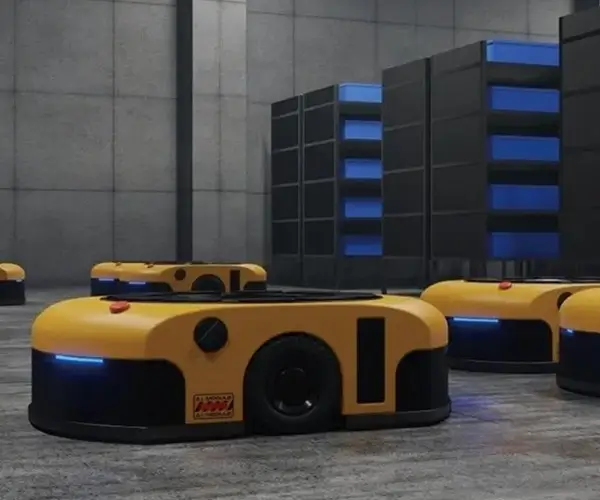Certainly! Here’s the first part of a compelling, informative article on "Servo Motor Controller Arduino," structured as you requested. I will follow with the second part shortly afterward.

Unlocking Precision: How to Control Servo Motors with Arduino for Your Robotics Projects
In the rapidly expanding realm of robotics and automation, servo motors stand out as the go-to solution for achieving precise, controlled movement. Whether you’re building a humanoid robot, a camera gimbal, or an automated arm, understanding how to harness a servo motor controller with an Arduino opens up an entire universe of possibilities.
What is a Servo Motor and Why Use a Controller?
At its core, a servo motor is a rotary actuator capable of precise control of angular position. Unlike standard motors that continuously spin, servo motors are designed to rotate to a specific position, hold that position, and then move to another upon receiving a signal. This precise control is invaluable in applications requiring repeatable, accurate movement.
A servo motor controller acts as the brain of this system—it interprets signals from the microcontroller (like an Arduino) and adjusts the power delivered to the motor accordingly. The controller ensures smooth, accurate, and stable movements, even under varying loads.
Types of Servo Motors
Before diving into how to control a servo motor with Arduino, it’s helpful to understand the types you'll encounter:
Standard Servos: Usually operate within a limited range, typically 0-180 degrees, and are the most common for hobby projects. Continuous Rotation Servos: Can rotate 360 degrees endlessly, functioning more like geared motors but still controlled via servo signals. Digital Servos: Offer higher precision, faster response, and better holding torque due to digital control signals.
Why Arduino is the Ideal Choice
Arduino microcontrollers are celebrated for their simplicity, community support, and versatility. Connecting and programming servos with Arduino is straightforward, thanks to dedicated libraries and widespread documentation. Plus, Arduino's analog and digital pins make it easy to integrate multiple servos and sensors into a single project.
The Building Blocks: Hardware You Need
Arduino Board: Uno, Mega, Nano—any compatible board works. Servo Motor(s): Pick based on your project’s torque and precision needs. Servo Motor Controller (Optional): For multiple high-torque servos or advanced features, using dedicated controllers like the PCA9685 PWM driver simplifies wiring. Power Supply: Servos can draw significant current; ensure your power source can handle your total load. Connecting Cables & Breadboard: For neat wiring and testing.
How It Works: Basic Principles
Servo motors accept pulse-width modulation (PWM) signals from the Arduino. The width of these pulses (measured in microseconds) determines the motor’s position. For instance:
A 1ms pulse might turn the servo to 0 degrees. A 1.5ms pulse centers at 90 degrees. A 2ms pulse moves it to 180 degrees.
This simple yet powerful control mechanism makes Arduino-based servo control intuitive once you grasp the core concepts.
Mastering Control: Programming Your Arduino to Command Servos
With the hardware components in place, the next step is programming your Arduino to effectively command the servo motors. The Arduino IDE provides a built-in library called Servo.h, which simplifies the process of sending PWM signals suited for servo control.
Setting Up Your Arduino Environment
Begin by installing the Arduino IDE and connecting your Arduino board to your computer. Once your hardware is ready, include the Servo library at the top of your sketch:
#include
Basic Servo Control Code
Here's a straightforward example to rotate a servo from 0 to 180 degrees and back:
#include Servo myServo; void setup() { myServo.attach(9); // Attach servo to digital pin 9 } void loop() { // Move from 0 to 180 degrees for (int angle = 0; angle <= 180; angle += 1) { myServo.write(angle); delay(15); // Wait for the servo to reach position } // Move back from 180 to 0 degrees for (int angle = 180; angle >= 0; angle -= 1) { myServo.write(angle); delay(15); } }
This code smoothly rotates the servo back and forth. The write() function is key—it sends the target position, expressed in degrees, to the servo.
Managing Multiple Servos
In more complex projects, you might control several servos simultaneously. You can simply declare multiple Servo objects:
Servo servo1; Servo servo2; void setup() { servo1.attach(9); servo2.attach(10); }
And then manipulate each as needed within your main loop.
Fine-Tuning Servo Performance
Speed Control: Use the write() function carefully with incremental steps for smoother movements. Limitations: Many hobby servos have physical constraints. Be mindful of their range to avoid damaging them. Power Wiring: Always power servos separately from the Arduino when using multiple or high-torque units to prevent voltage drops.
Advanced Control Techniques
For more sophisticated motion control, consider implementing functions such as:
Servo calibration for precise positioning. Acceleration profiles for gentle starts and stops. Sensor feedback loops for dynamic adjustments based on environmental input.
Using External Controllers
When projects involve numerous servos or require synchronized movements, dedicated servo controllers like the PCA9685 PWM driver shield can be a game-changer. These controllers communicate via I2C, freeing up Arduino pins and enabling highly coordinated actions.
Benefits of using external controllers:
High channel counts: Control dozens of servos with a single device. Consistent PWM signals: Reduces jitter and improves accuracy. Simplifies wiring: Less clutter on your breadboard or PCB.
Programming these controllers involves sending commands over I2C, but libraries are readily available to streamline development.
Final Tips for Success
Test incrementally: Always test your servo with simple scripts before integrating into complex routines. Manage power wisely: Overloading your power supply may cause erratic behavior. Use adequate shielding and wiring: Proper connections ensure reliable operation. Practice patience: Servos may respond sluggishly or jitter if overloaded or improperly powered.
That covers the foundational knowledge and initial steps for controlling servo motors with Arduino. In the subsequent part, I’ll explore advanced applications, troubleshooting tips, and innovative project ideas that leverage servo control, pushing your robotics projects to new heights.
Established in 2005, Kpower has been dedicated to a professional compact motion unit manufacturer, headquartered in Dongguan, Guangdong Province, China.




































